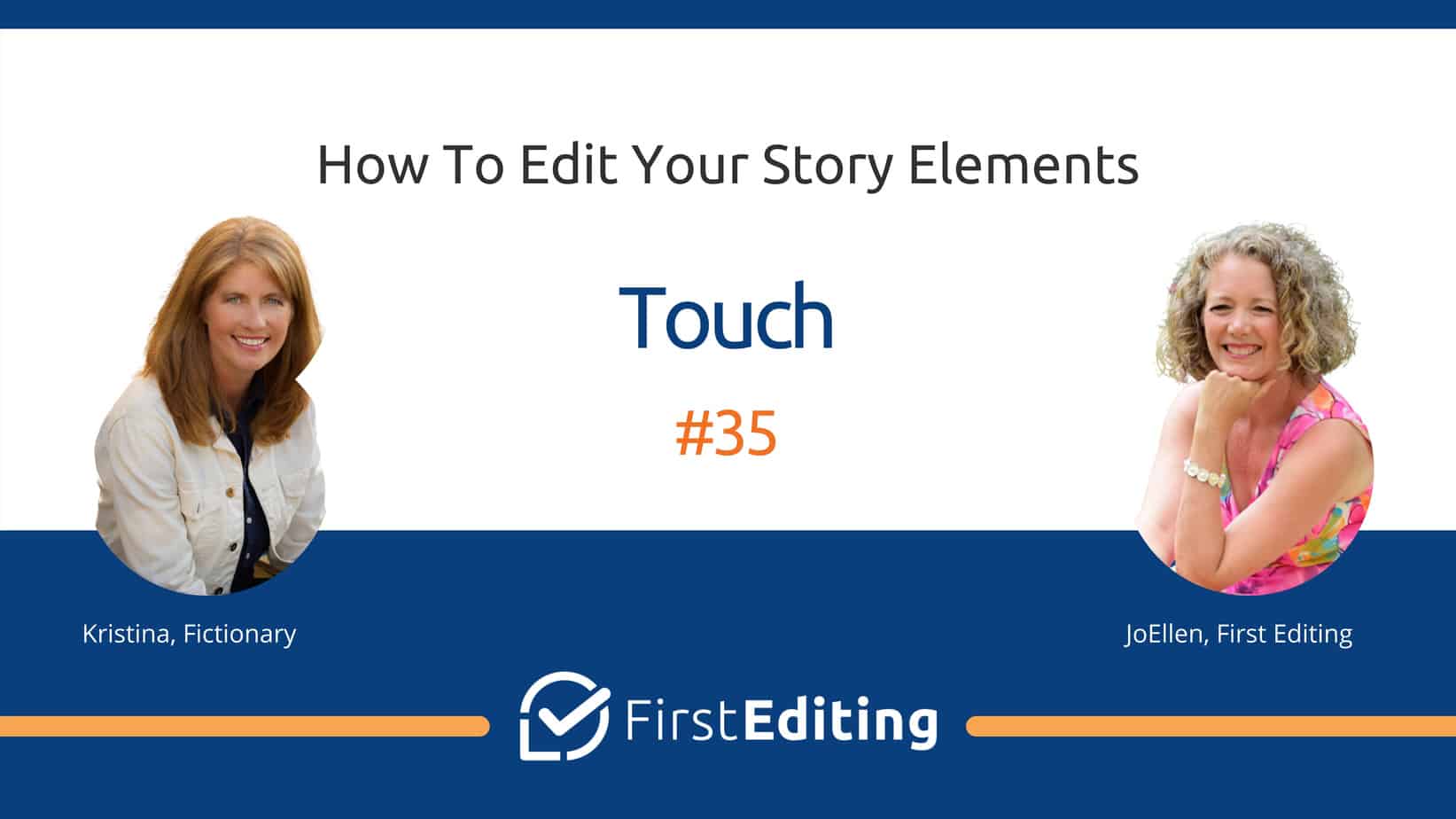We’ve been through sight, smell, sound, and taste, and today we’re going to cover how to use touch to engage readers.
The importance of touch in fiction writing
The goal with using all the senses in fiction is to make the reader physically feel what the character does so that, as the character experiences something, the reader does, too. We want the reader to empathize with the characters, and sensory information helps us do that.
Like the other senses, touch can do a lot to help the reader experience the story world. Bit for touch to have an emotional impact, it must be related to the plot. So, if a character burns their tongue on coffee, that doesn’t matter, but if the character then spits it out and bends over quickly at the moment a sniper was going to shoot them and the bullet misses their head, it’s more exciting. So, make sure all the senses are related to the plot you are telling.
You also want to vary up the descriptions of touch.
For example, let’s say a character gets nauseous a lot because of their anxiety. You can’t repeat this too much because. If you do, it will lose its impact. If the character’s stomach feels bad every time she’s anxious, but if that’s it, her reaction gets repetitive and dull. One way to deal with this is to ramp up the reaction. So, as her anxiety grows, she starts to throw up, which causes an ulcer. Now there’s some escalating feeling there, and it’s more interesting because the reader anticipates just how bad it might get.
You should know your genre and how touch is commonly applied within it.
In romances, for example, there’s often a lot of touching and tasting, particularly in the climax and resolution, so if you’re writing one, you’ll want a lot of those senses in there. When writing a mystery, the physical details of the murder site are very important because they provide a lot of clues.
Pitfalls when using touch
You should know your genre and how to apply this sense in that genre. The pitfalls tell us what to avoid. To help the reader experience that something hurt or how much did it hurt, where did it hurt, and why did it hurt, you have to ask these questions.
The biggest pitfall with touch is telling the reader something as opposed to showing it. The description of the results is often a lot more effective than the explanation of what happened or even how the character felt because of it.
Let’s say the character Susan touches a heating element. She rips her hand off, her skin bubbles, and she falls to her knees. Even though you don’t use the word “hurt” to describe what happened to Susan, the reader knows she’s in a lot of pain because you’ve said her skin bubbled. We’ve all had a little burn. Some people have suffered big burns, which are extremely painful things, but even a little burn hurts, and the reader knows this.
You know that a writer is effective when you read a scene like the one above and feel almost like sinking to your knees. When the description can evoke such emotion, then you know you’re using it successfully.
Go through all of your scenes and look for touch. You should not be repetitive and you know you’re going to end up with this whole list of all of the five senses together.
So, think about the story you’re writing and which senses are important to that type of story, and then make sure you are using all of the senses in a balanced way. We all use them every single day, so a reader will want to experience all of them together. Remember, some people are more sensitive to a specific sense than others, so if you omit one, you have omitted a person who is more audio, visual, or
tactile. Not everyone thinks or feels things in the same way. By hitting all the sense, you catch all your readers.
If you like what you’ve read, please share the chapter with friends who might need this information.
WATCH NEXT EPISODE: Emotional Impact – Episode #36
WATCH PREVIOUS EPISODE: Taste – Episode #34
RETURN TO THE 38 STORY ELEMENTS


















